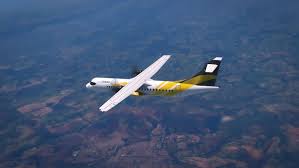By: Jerry Zhang
On Friday, August 9, 2024, VoePass Flight 2283 fell from over 17,000 feet in the sky and crashed into a residential building in Vinhedo, Brazil, resulting in the deaths of all 62 people on board. The cause of the crash is currently unknown, but an investigation into the incident began on Saturday. Officials are analyzing the black boxes, which are flight data recorders, at the site of the crash.
VoePass Flight 2283 was carrying 58 passengers and four crew members on a scheduled flight from Cascavel, Brazil to São Paulo, Brazil on Friday when it crashed in a gated community in the small city of Vinhedo, just before reaching its destination. Fortunately, no one on the ground was injured.
Not everything about this incident is a mystery. Experts who analyzed the videos showing the plane slowly spiraling downward before crashing unanimously agreed on what was happening – the plane had stalled. In other words, the wings had lost the lift needed to keep the aircraft airborne, which caused the plane to stop flying and begin falling.
The real question is why the passenger plane might have stalled. According to Thomas Anthony, director of the Aviation Safety program at the University of Southern California, “The main thing we know is that it’s never one thing.” Currently, the leading theory suggests that the stall may have been partly due to severe icing, where ice formed on the wings or other parts of the plane, reducing its aerodynamic capabilities and increasing its weight. “The way the aircraft fell, spinning out of control, is typical of a situation where the wing and aircraft controls have lost functionality,” said Celso Faria de Souza, a Brazilian aeronautical engineer and forensic expert in plane crashes. “This can happen because of ice.”
However, this raises further questions, as passenger planes are equipped with systems to break up ice that forms on the wings. Specifically, the ATR 72-500 turboprop, the plane that crashed, has a system consisting of rubber tubes on the wings that are supposed to inflate and deflate to break up any ice.
Former crash investigator with the Federal Aviation Administration Jeff Guzzetti asked, “Did the crew activate the anti-icing system? Or did they activate it and it failed?” Even if the systems had failed, the pilots should have been able to see the ice on the wings and windshield wipers and lowered the plane’s altitude, where warmer air would have melted the ice.
Whatever the cause of this crash, it remains a tragic accident that claimed many lives and deeply affected those who knew them. Hopefully, we can learn from this incident to prevent such a tragedy from happening again.











